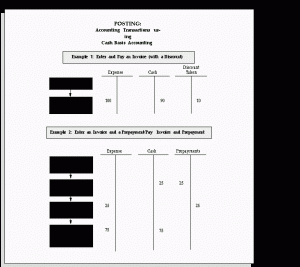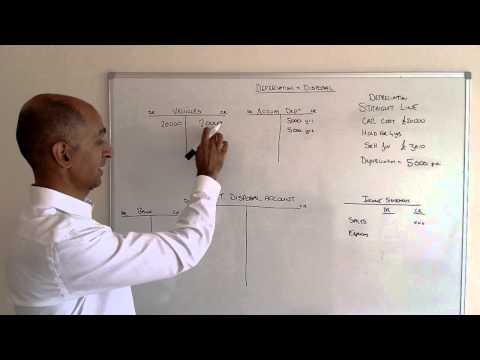How do I edit a payment that has already been deposited?

When a payment is accidentally deleted in QuickBooks, users can utilize the ‘Audit Log’ feature to track the deleted transaction and restore it. This log records all changes made to the data, enabling users to easily locate and recover the deleted payment entry. A confirmation prompt will appear, and upon confirmation, the payment will be permanently removed from your records. Remember to verify and update your accounting records to reflect the deletion accurately. In QuickBooks Desktop, deleting a payment involves accessing the payment transaction and utilizing the ‘Delete’ function to remove the payment record from the system. Learning how to delete payments from deposits in QuickBooks and the data recovery methods to keep your accounts accurate is crucial to your success.
Deleting Overdue Payments on QuickBooks
- Deleted bills may cause audit trail issues and lead to challenges during tax filings or financial audits.
- After initiating the void process, QuickBooks will prompt a confirmation dialogue to ensure the intentional nullification of the selected deposit transaction.
- Duplicate entries can clutter the records and affect overall financial visibility, prompting the need to delete the deposit.
- Voiding a bill also helps in preserving the transaction history, showcasing the reason for the voiding and maintaining transparency in the accounting process.
To prevent future duplicates, double-check entries before saving and use the audit trail feature. When a payment is received, it is debited from the account holding the deposited funds. Your undeposited fund account will be credited with the amount of the deposit when you make a deposit. Once the ‘Edit’ option is clicked, a window will appear allowing you to make necessary changes to the deposit entry. In QuickBooks Desktop, to void a bill, you navigate to the vendor���s profile, select ‘Make inactive’ for the bill in question, and ensure the accounts are updated accordingly. Deleted bills may cause audit trail issues and lead to challenges during tax filings or financial audits.

Once you confirm the delete action, the deposit entry will be permanently removed from your records. It’s important to note that deleted deposits cannot be recovered, so ensure that you have selected the correct entry for deletion. To begin, navigate to the Banking Tab and select the relevant account where the deposit was recorded.
Delete a Deposited Payment
It is known for its user-friendly interface that simplifies tasks like invoicing, expense tracking, double declining balance method: a depreciation guide and creating financial reports. The online version offers the advantage of accessibility from any device with internet connectivity, while the desktop version provides robust features for offline use. Select the « Edit » menu, then « Delete Deposit. » A warning displays, asking you to confirm the action. Set alerts to remind you when to follow up or reply to customers, leave comments and track their history, and generate detailed reports to make informed decisions. With all your financials in one place, company taxes have never been easier.
This is crucial to avoid any discrepancies in bank reconciliation and financial records. Voiding a deposit in QuickBooks is a total variable cost critical process to nullify a previously recorded deposit transaction, ensuring accurate financial records and transaction management. Follow the outlined steps to effectively void a deposit within the QuickBooks software.
QuickBooks provides a user-friendly interface for this task, allowing you to navigate through deposits easily, thus making the deletion process efficient given the right attention to detail. The link at the end of these instructions is broken; I’ve gotten halfway through the instructions (deleting part of the deposit in QBO) but now I don’t know what to do next. Also, it seems you reference this very post as the next step, which is a little confusing. I’d be happy to help show you how to edit a payment that has already been deposited in QuickBooks Online. Double-click « Undeposited Funds » to display the register for this type of funds. Go to the homepage of your QuickBooks Desktop and select Check Register from the Banking menu.
How to Record a Cash Deposit in QuickBooks
QuickBooks allows users to group payments based on specific criteria and deposit them as a single record in the respective accounts, streamlining the bookkeeping process. This confirmation step is crucial to prevent accidental deletions and ensure the accuracy of your financial records. By confirming the deletion, you affirm that the action is deliberate and intended. Remember, once confirmed, the deletion is final, and it cannot be undone without restoring a previous backup.
After clicking ‘Void Deposit’, a confirmation prompt will appear asking you to confirm the voiding of the deposit. Carefully review the details of the transaction to ensure it is the correct deposit to void. Once confirmed, the deposit will be voided, and the status will be updated accordingly in the system. Within the selected payment entry, locate and click on the ‘Edit’ option followed by the ‘Delete Line’ function to initiate the deletion of the specific payment within the deposit in QuickBooks. Upon selecting the deletion option, QuickBooks Online will prompt a cost of equity confirmation dialogue to ensure the intentional deletion of the selected deposit. After completing the delete process, make sure to review your remaining deposits to ensure that your financial records accurately reflect the changes made.
 Categories:
Categories:  Tags: |
Tags: | 